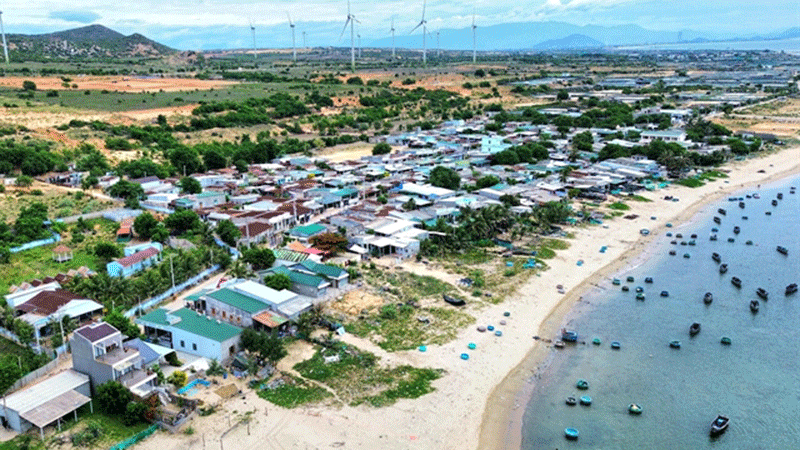 |
A view of Phuoc Dinh Commune, where the Ninh Thuan 1 Nuclear Power Plant will be built.
--Photo VNA/VNS |
Isolation zones key to Vietnam nuclear safety strategy, officials say
HANOI (VNS) -- Planning and maintaining a nuclear isolation zone is a crucial component in ensuring the safety of nuclear power development in Vietnam, energy officials said, as the country prepares to move forward with its nuclear power programme.
Tran Chi Thanh, Director of the Vietnam Atomic Energy Institute under the Ministry of Science and Technology, said selecting suitable locations for Vietnam’s first nuclear power plants was a complex and costly process that spanned two decades from 1996 to 2016.
With support from Russia and Japan Vietnam spent significant financial resources evaluating and selecting sites that met the requirements for nuclear construction.
Two locations, Phuoc Dinh and Vinh Hai Communes in the southern province of Ninh Thuận, were ultimately chosen due to favourable conditions, including coastal access for cooling systems and transport infrastructure for fuel and equipment.
He also noted that the size of an isolation zone would depend on the design and scale of the plant, with distances from the plant’s fence typically ranging from several hundred metres to over one kilometre. The zone might include land and sea areas and must be carefully planned to ensure safe water intake for reactor cooling.
“The isolation zone is key to ensuring the safety of nuclear power plants and surrounding communities, helping to minimise risks of radioactive exposure and prevent the spread of contaminants in the event of an incident,” Thanh said.
Ta Van Thuong, a specialist at the Ministry of Industry and Trade’s Institute of Energy, said safety must remain the highest priority in all phases of nuclear development, from design to waste management.
“Globally, countries aim to reduce risks to the lowest possible level through technical, managerial and legal measures, with safety always taking precedence,” he said.
On April 23, 2025, the Ninh Thuan Provincial People’s Committee submitted a request to the Ministry of Science and Technology for guidance on determining a safe distance between plant construction sites and residential areas.
The request followed an April 17 directive from the Ministry that defined a no-residence zone as extending at least one kilometre beyond the plant’s perimeter fence.
This has created a discrepancy with earlier regulations. Under Decision No.6070/QĐ-BCT issued by the Ministry of Industry and Trade in 2015, the isolation zone requiring relocation was set at 500 metres from the fence. Ninh Thuan authorities had already carried out site clearance and resettlement according to that guideline.
In its report to the Prime Minister, the provincial government requested a unified directive on the boundary of the isolation zone to enable consistent implementation.
While awaiting further instructions, the province is continuing relocation efforts based on guidelines issued by the Ministry of Industry and Trade in May 2025. The approach aligns with existing decisions on resettlement issued by both the Ministry and the Prime Minister’s Office.
According to the Resettlement Steering Committee, the first plant in Phuoc Dinh will affect 2,910 people, while the second in Vinh Hai will affect 2,319 people.
The committee is evaluating the unique risks posed by potential radioactive releases, aiming to ensure human safety remains central to the planning and development process.
(Latest Update June 24, 2025)
|